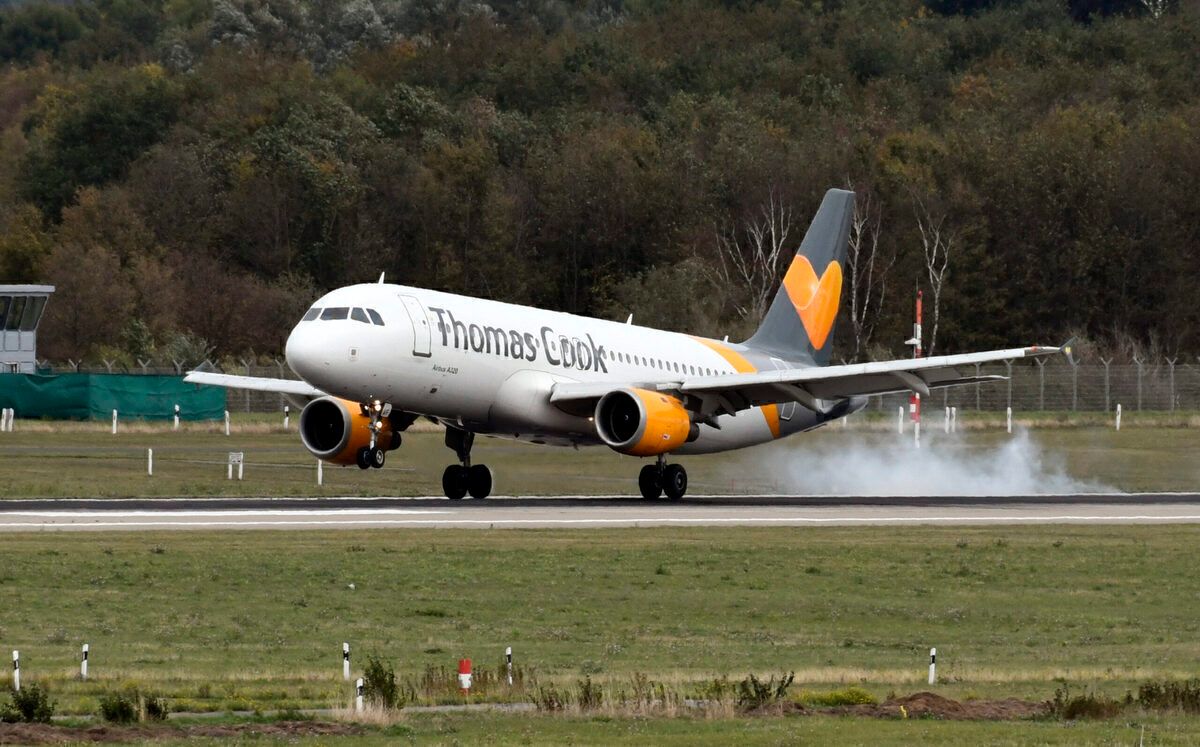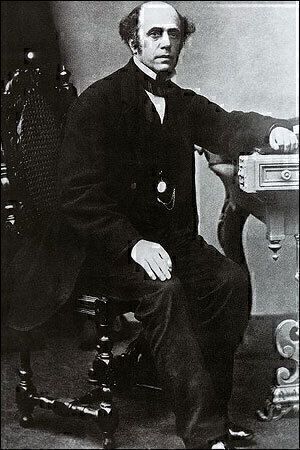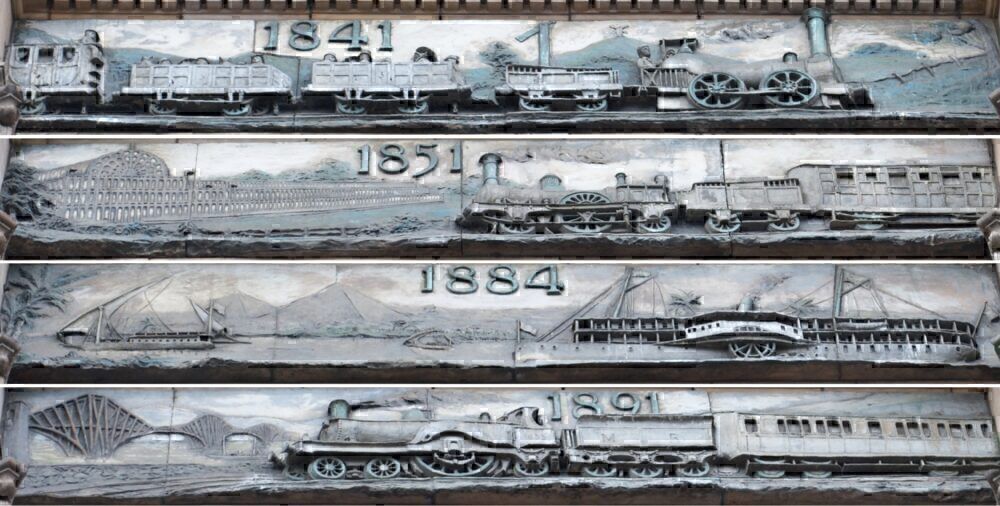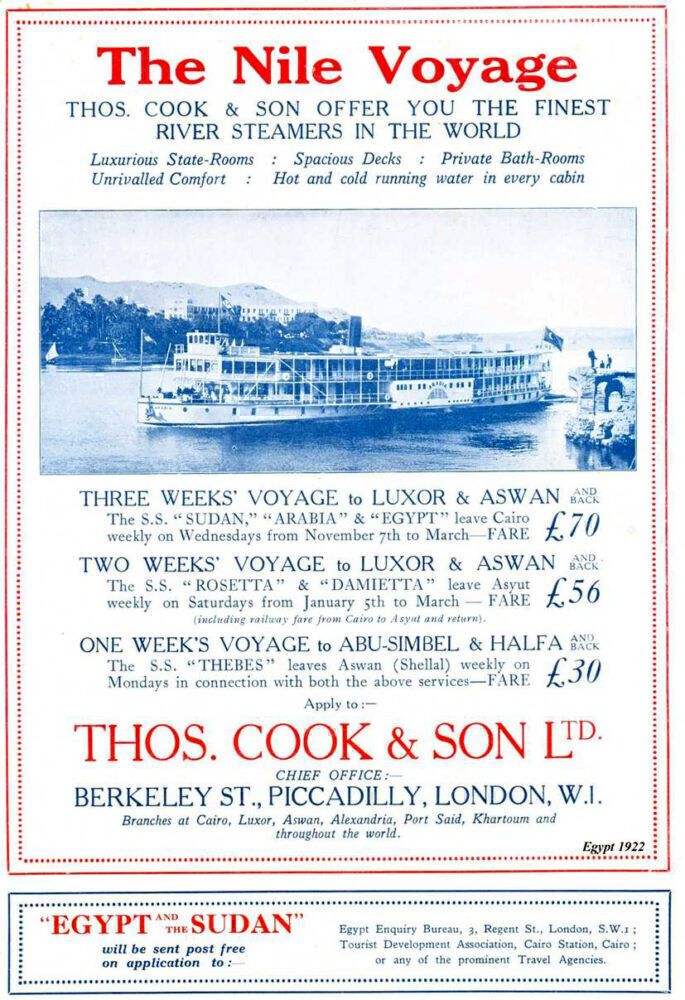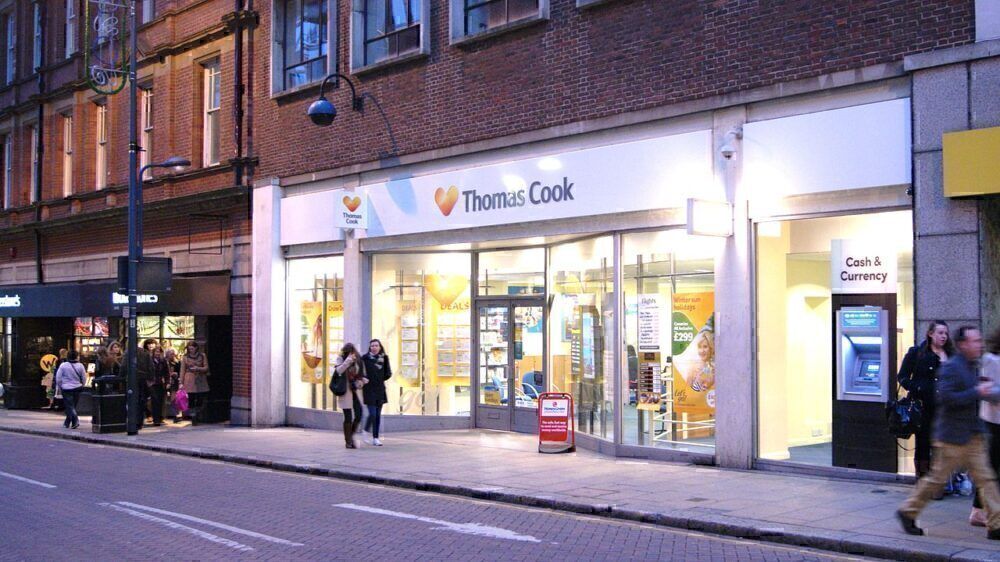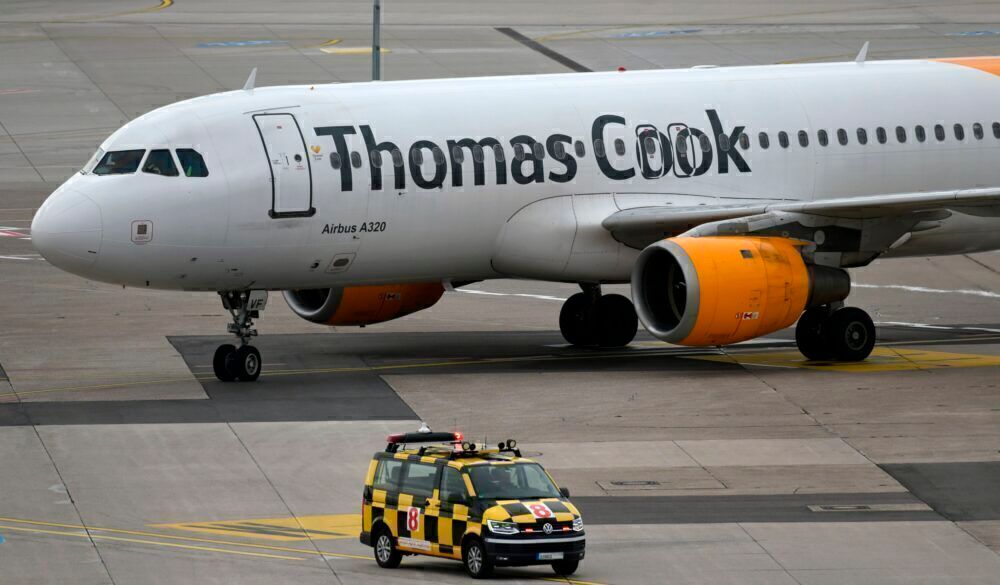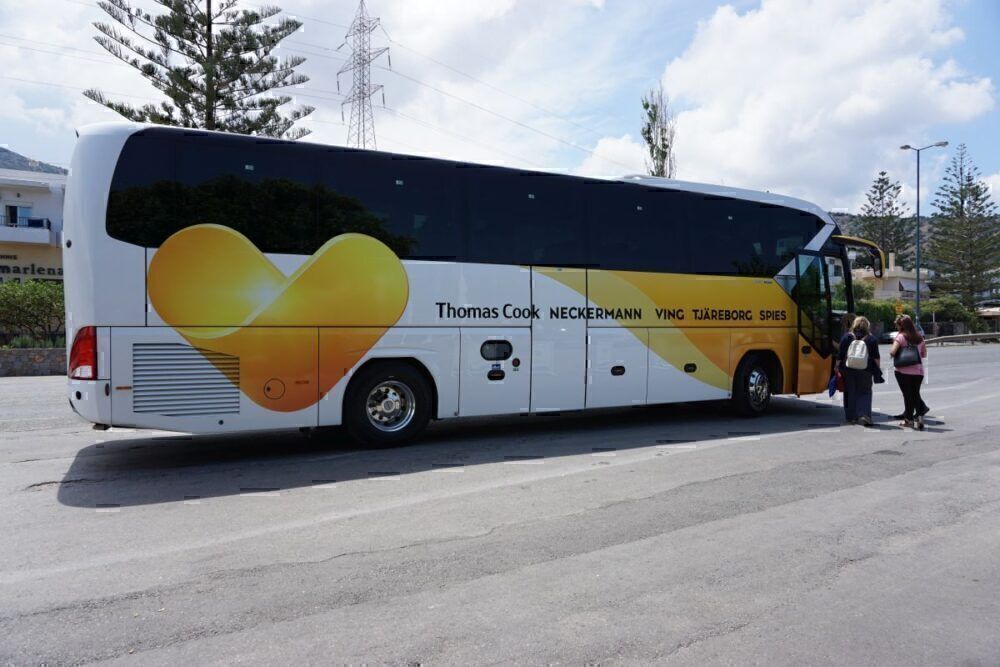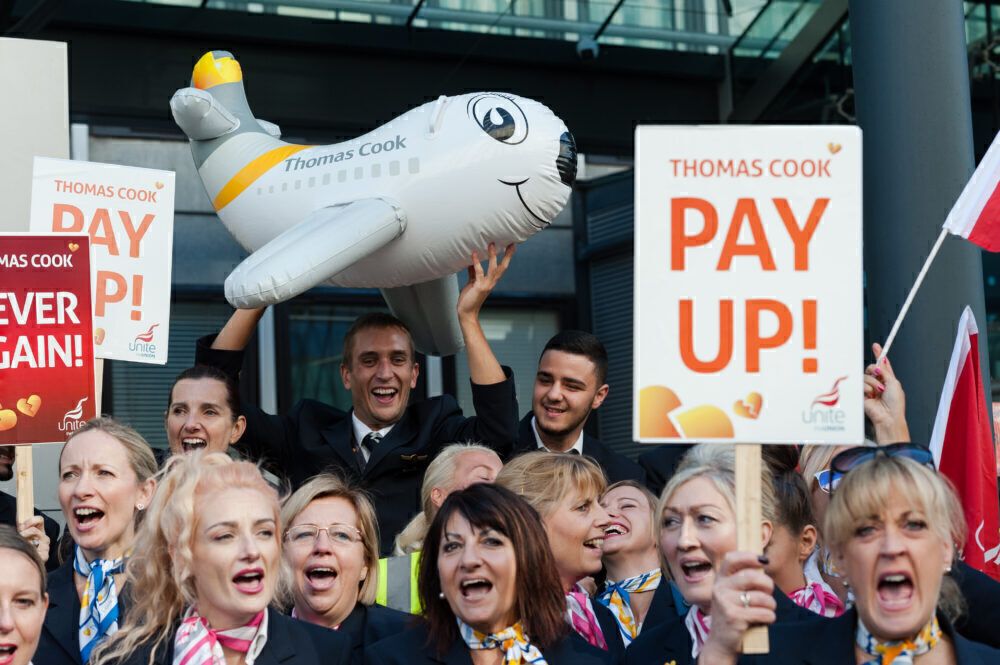Thomas Cook declared bankruptcy in 2019, leaving hundreds of thousands of travelers stranded overseas. The 178-year-old company was one of the biggest brands in travel. We take a look back at the long history, international expansion, and sudden downfall of this once great British company.
The origins of Thomas Cook
Not many travel companies today can trace their history as far back as Thomas Cook. The agency dates back to 1841, with Baptist missionary and cabinet-maker Mr Thomas Cook. Cook was a member of the anti-alcohol temperance movement in Leicester. He saw a chance to organize tours for members to attend anti-liquor meetings and rallies in other cities.
The first trip involved Cook hiring a Midland Counties Railway train to take 500 members from Leicester to Loughborough. And they paid well for it. This soon expanded to other meetings, and by 1845 to leisure outings. The first of these was to Liverpool and attracted 1,200 people.
Word traveled, and trips were soon being organized all other the UK, backed by other business figures. He organized transportation for workers from the Midlands and Yorkshire to London for the 1851 Great Exhibition. Thomas Cook tours were alive and expanding!
International expansion
Within a decade, Thomas Cook’s tours had expanded internationally. Crossing the channel from Essex gave rise to a circular tour that included Brussels, Cologne, Heidelberg, Baden-Baden, Strasbourg, and Paris. From 1865, tours expanded to North America, combining transatlantic sailings with rail tours of the US.
And in 1872, it organized its first around the world tour, crossing the US and touring Japan, China, and India.
Along with the expansion in locations, Thomas Cook introduced new ways to help pay for travel, concepts that remain with us today. This included the hotel coupon to allow customers to easily pay for hotel stays, and the circular note, a predecessor to the traveler's cheque. Without these, package holidays would have been much harder to organize. It also introduced a European railway timetable, ‘Cooks Continental Timetable,’ which survives in some form still today.
Stay informed: Sign up for our daily and weekly aviation news digests.
Moving on from the Cook family
Thomas Cook died in 1892. His son took over until his death and then his grandsons. This period saw more overseas expansion, especially in the Middle East and Egypt. The company also set up offices in Australia and New Zealand.
In 1928, they decided to sell the company. It was taken over by French company Compagnie Internationale des Wagons-Lits, already well established with its Orient Express operations. It was sold again in the 1940s to Hays Wharf Cartage Company in the UK.
Following struggles during the years of the Second World War, it was nationalized in 1948 and became part of the British Transport Commission (which also oversaw the railways).
It expanded its package tours with flight offerings over the coming years, turning over a profit of £1 million ($1.3 million) by 1965. Like other companies, it suffered during the recession of the 1970s. But with its focus on package and affordable travel, it came out stronger than many.
It became privately owned again in 1972, purchased by a private consortium, including Midland Bank. And in 1992, it was bought again by the German bank Westdeutsche Landesbank.
By this time, it had expanded significantly in the US, including in financial services and traveler’s cheques. The US operations were sold separately to Crimson in 1989 for $1.3 billion.
Becoming the Thomas Cook Group
Thomas Cook did not last long with Westdeutsche Landesbank and was sold again in 2001, becoming an Anglo-German company, Thomas Cook AG. This group sold off some of the company's overseas divisions but sought to expand and make cost savings through a major merger with UK-based MyTravel Group plc. This merger was completed in June 2007, with Thomas Cook Group plc listed on the London Stock Exchange.
Thomas Cook Airlines was formed in 2007 as part of the merger (incorporating predecessors Airtours International and MyTravel Airways). Over the years, it served up to 82 destinations in Europe, Africa, and the Americas. It operated the Boeing 757-200/300 and 767-300 and the Airbus A320, A321, and A330-200.
Financial problems for Thomas Cook
What went wrong for the company? Its downfall was due to a combination of factors – some financial and others related to market conditions.
Financial problems for the Thomas Cook Group began in 2009. It issued a profit warning in 2009, and by 2010 its debt had grown from £249 million ($324 million) to £804 million ($1.05 billion), according to an analysis by Forbes. The company attempted to close the gap by raising £425 million ($554 million) from shareholders in 2013.
By 2017 though, the additional money had been spent, and total debt stood at £1.6 billion ($2.09 billion). Strangely though (as discussed in an analysis by the BBC), the company returned to paying shareholder dividends in 2017 and 2018, despite worsening financial conditions.
The downfall of Thomas Cook
There were other factors in its downfall as well. The rise of low-cost airlines in Europe had really challenged its model. So too had a rise in independent and online accommodation bookings and alternatives.
Thomas Cook was built for the package holiday and struggled to adapt its way of doing things fast enough. Discussing Thomas Cook’s downfall with the BBC, ex-Monarch managing director, Tim Jeans said that Thomas Cook had “an analogue business model in a digital world.”
A merger with the Co-operative Travel group in 2010 did not help this. This turned to an expensive full acquisition by 2016, further hurting the company’s financial position. And the strategy to end up with the largest chain of high street shops suffered as customers moved online.
Brexit in the UK was a challenge as well. Along with other travel companies, Thomas Cook faced a slowdown in travel amidst ongoing uncertainty over future plans in 2018 and 2019.
Sudden bankruptcy in 2019
In May 2019, Thomas Cook released the worst half-year results in its history, and it was clear that debts were becoming too high. It entered talks with China firm Fosun, with reports of investment up to £1 billion, but this did not proceed.
A final request to the UK government for £200 million of funding to keep it operational was refused. As reported by Forbes, UK Transport Minister Grant Schapps explained the decision, saying:
“Governments don’t run travel agents, and I don’t think they should. If you tried to prop this company up, then not very far down the line we would be right back where we are today.”
With this failure, the company declared bankruptcy on September 23rd, 2019, bringing its long history to a sudden (but not entirely unexpected) end. The collapse left more than 600,000 people stranded overseas and saw the UK government launching a major repatriation program. Operation Matterhorn brought over 140,000 people back to the UK, the largest peacetime repatriation ever conducted.
Making a comeback in 2020
It may not all be over though for Thomas Cook. In September 2020, it was announced that Thomas Cook would re-emerge as a much leaner online seller of package holidays. Following the bankruptcy, Fosun bought the Thomas Cook trademarks, websites, and social media accounts for US$14.2 million.
This is relaunching as a UK-based business selling simple packages, and initially to quarantine-free destinations for UK travelers. It’s early days, of course, and a difficult time to sell travel right now. But maybe we will see once again the rise of the company from its new, smaller beginnings.
Would you like to share any previous experiences with Thomas Cook or thoughts about its collapse? Let us know in the comments.

